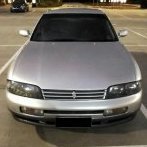Fabricating A Metal Sleeve To Fix Wear On Crank
Announcements
-
Similar Content
-
Latest Posts
-
Could someone post some pictures of the factory Jack , tools, spare tire and how they were in a 1998 ER34 2 door skyline originally?
-
UPDATE: Hi all! As we are getting towards the end of this thread where I’ll showcase final dyno numbers and graph, I wanted to provide an update. Tao from HyperGear has done an amazing job building the custom divided T3 housing for the G30. Communication was flawless, price was great, and now the housing is estimated to arrive in 7-10 days! Very very pleased. I must add, if someone is looking for an affordable turbo and end up reading this thread, I would recommend HyperGear. Genuine brands are the way to go as their proven reliability, predictable performance, and there’s a plethora of information available for specs, flow, and more. This HyperGear recommendation is based on their excellent communication, dedication, and willingness to listen to their customers. I particularly liked their ability to create custom adaptations tailored to specific needs, which is a HUGE benefit over other brands. And if we consider the HyperGear provided dyno results, it adds reassurance knowing their turbos can compete against genuine brands. Next update will be after the dyno!
-
I've previously seen people post up "dress up bolt kits" for RBs but don't remember seeing them specify the full contents. I can only really suggest you grab the verniers and start measuring, and keep in mind the cam cover and timing cover bolts are both quite specific with a wider unthreaded section where the bushes sit, that will make it hard to get aftermarket replacements which tend to be all thread (set screws) or for longer bolts a flat section with a shorter threaded section at the end
-
I believe there was a similar one posted by @duggyphresh. They were re-routing their battery positive cable in the way I am also trying to achieve. Sorry, I’m new to this forum, so was a bit late to the party by a few months and so reignited the old thread, as I wanted to know how they got on with doing it.
-
Wasn't there a thread on this very subject just a few weeks ago?
-





Recommended Posts
Create an account or sign in to comment
You need to be a member in order to leave a comment
Create an account
Sign up for a new account in our community. It's easy!
Register a new accountSign in
Already have an account? Sign in here.
Sign In Now